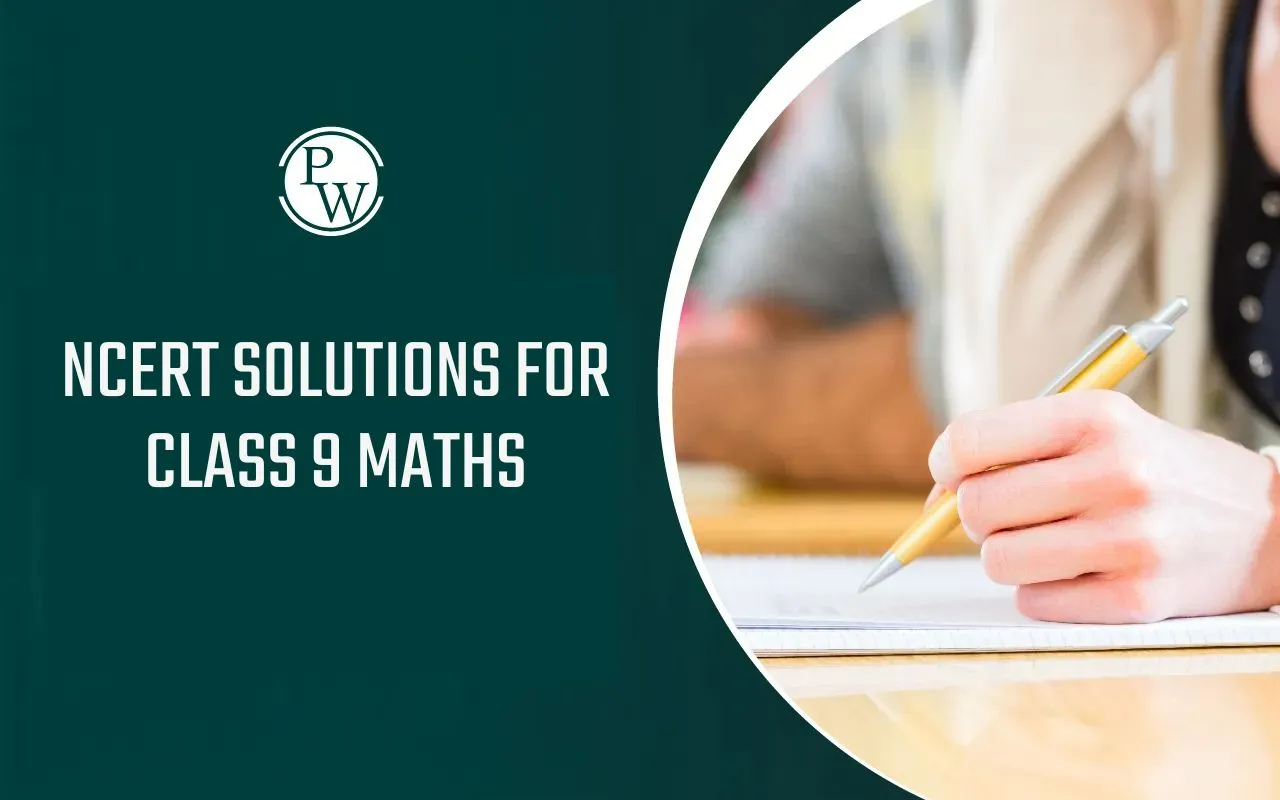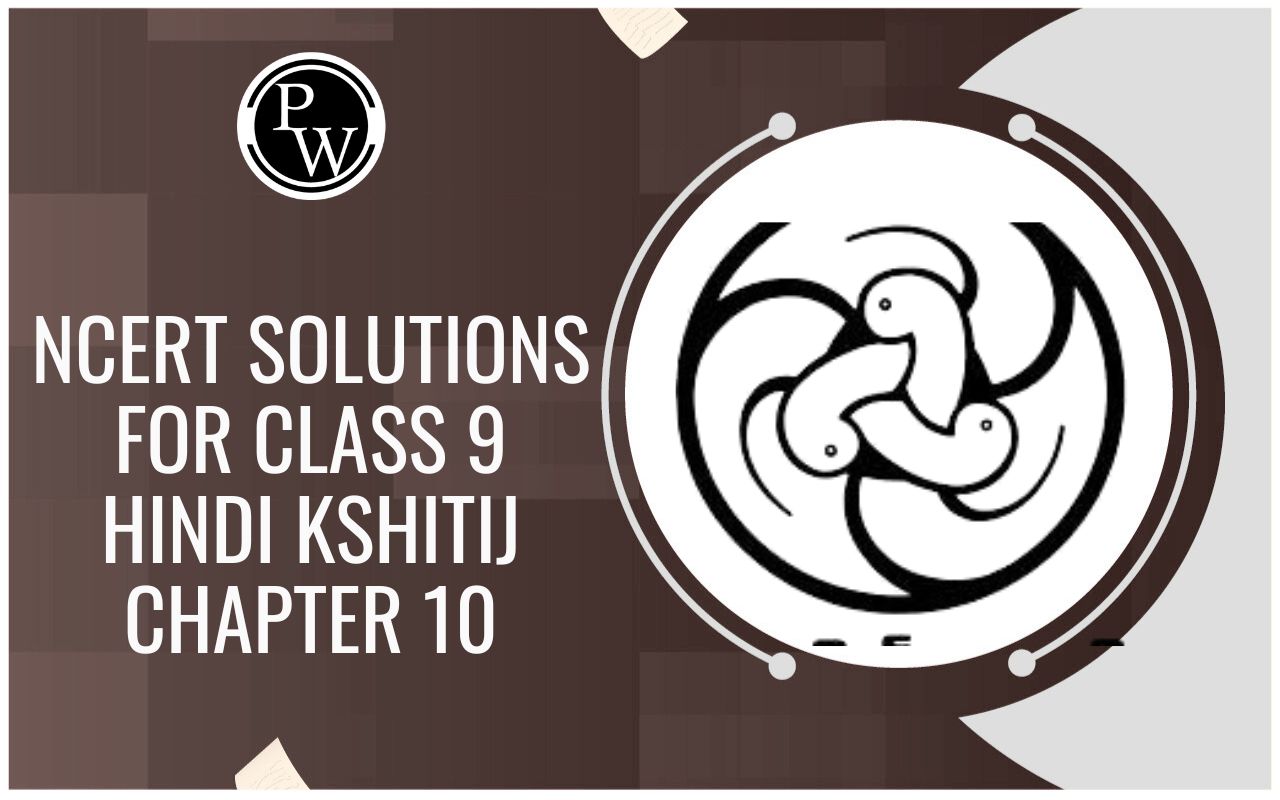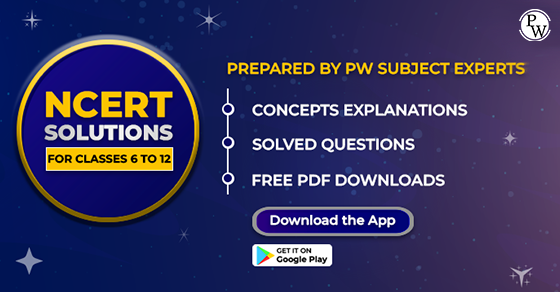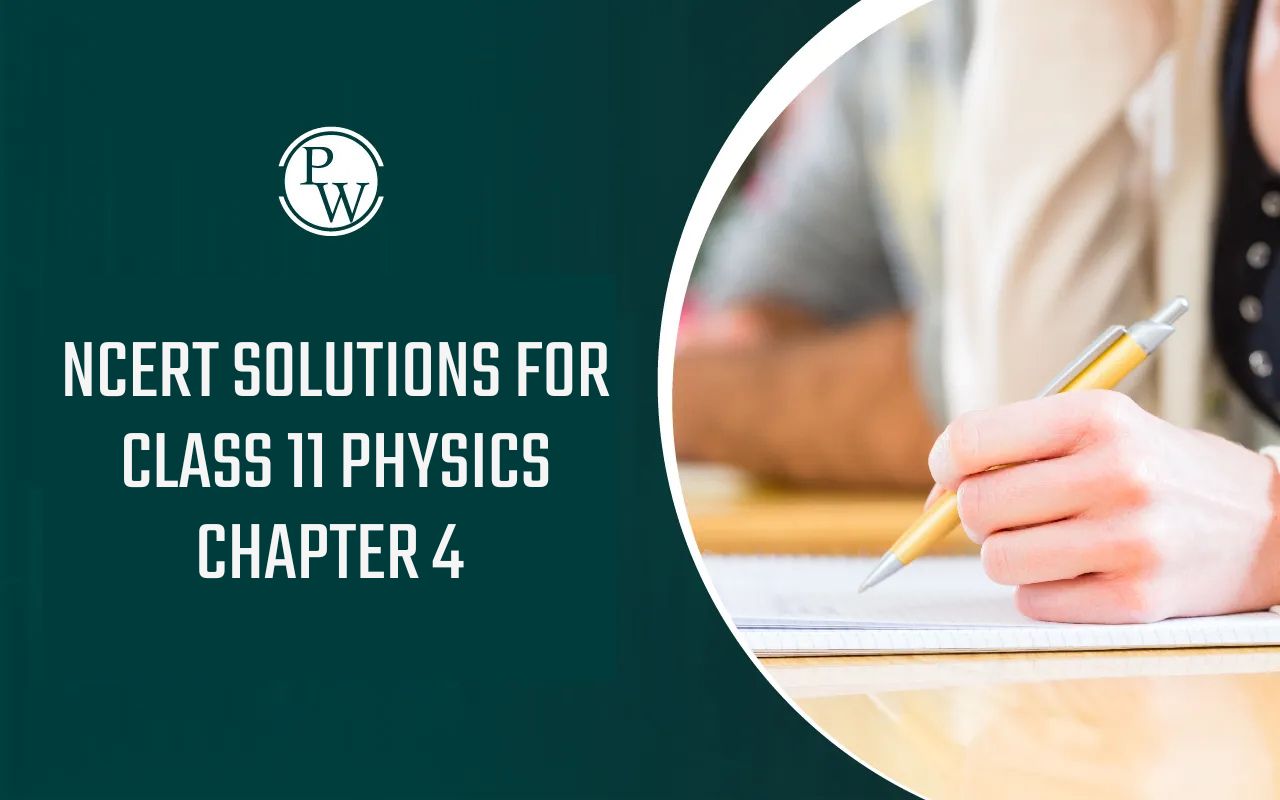
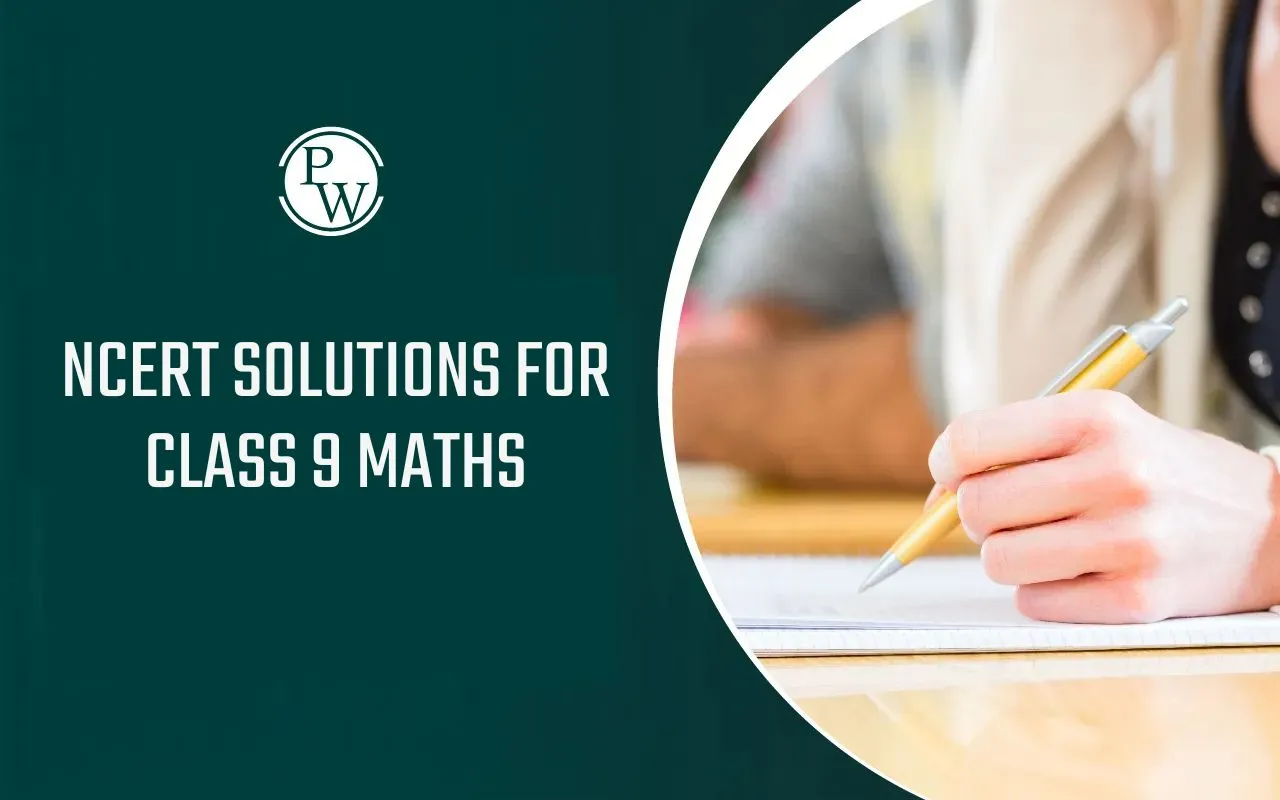
NCERT Solutions for Class 9 Maths are a useful resource for students preparing for exams. They provide clear, step-by-step answers to all questions in the NCERT textbook.
By using these solutions students can strengthen their understanding of important concepts, practice problem-solving and revise the entire syllabus effectively, boosting confidence and improving performance in exams.
NCERT Solutions for Class 9 Maths
The Class 9 Maths syllabus includes important topics like Circles, Polynomials, Statistics, Triangles, Heron's Formula, and Surface Areas and Volumes. To do well in Maths, students need clear guidance and practice. NCERT Solutions are very helpful for this.
These solutions explain concepts, theorems, and formulas in an easy way, making calculations simpler. They allow students to practice all chapters and understand key concepts step by step. The solutions also follow CBSE guidelines, helping students learn the correct way to answer questions in exams.
Using NCERT Solutions, students can identify important question patterns, improve their answering skills, and plan their preparation more effectively.
NCERT Solutions for Class 9 Maths Chapter Wise
You can download NCERT Maths Class 9 Solutions PDF. These solutions are designed according to the latest NCERT guidelines and exam pattern, making them an excellent resource for exam preparation. The solutions helps students practice all chapters effectively and is useful for quick revision before exams. Among all online materials for the Class 9 Maths syllabus, these NCERT Solutions are considered one of the most effective ways to prepare for Class 9 examinations.
NCERT Solutions for Class 9 Maths Chapter 1
This chapter covers topics like rational and irrational numbers. Students learn to plot integers, rational, and irrational numbers on an extended number line. It also explains how to represent terminating and non-terminating recurring decimals using the successive magnification method and how to plot square roots of numbers like 2, 3, and other non-rational numbers on the number line. The chapter also covers laws of integral powers and rational exponents with positive real bases.
Topics Covered:
-
Number line representations of natural numbers, integers, and rational numbers.
-
Representation of recurring and terminating decimals using successive magnification.
-
Understanding non-recurring/non-terminating decimals like √2, √3, √5 (irrational numbers) on the number line.
-
Each real number corresponds to a unique point on the number line and vice versa.
-
Definition and visual understanding of the nth root of a real number.
-
Laws of exponents with integral powers and introduction to rational exponents with positive real bases.
Students can also access helpful resources for Class 9 Maths Chapter 1: Number Systems for better understanding and practice.
| Important Questions for class 9 maths Chapter 1 Number Systems |
| RD Sharma Solutions for Class 9 Chapter 1 Number Systems |
| Maths revision notes for class 9 maths Chapter 1 Number system |
NCERT Solutions for Class 9 Maths Chapter 2
In Chapter 2 of Class 9 Maths, students learn about polynomials, which are expressions made up of variables and coefficients. The chapter covers their addition, subtraction, multiplication, division, and factorization. It also introduces the Factor Theorem and Remainder Theorem, showing how they apply to polynomials.
Topics Covered:
-
Definition of a polynomial in one variable, its coefficients, terms, and zero polynomial, with examples and counterexamples.
-
Types of polynomials: constant, linear, quadratic, cubic; monomials, binomials, trinomials.
-
Zeros/roots of polynomials and equations.
-
Statement, explanation, and proof of the Remainder Theorem and Factor Theorem.
-
Factorization of quadratic and cubic polynomials using the Factor Theorem.
-
Historical context of polynomials in mathematics, including their role in equations like the Pythagorean theorem.
Students can also access helpful resources for Class 9 Maths Chapter 2: Polynomials for practice and better understanding.
NCERT Solutions for Class 9 Maths Chapter 3
The Chapter discusses the cartesian plane, the coordinates of a point in the 'xy' plane, and several other terms associated with coordinate geometry.
Topics Covered
- A brief introduction
- The Cartesian System
- Plotting a point in a plane given its coordinates
- For example, plot points in the plane, diagrams of linear equations, the Cartesian plane, coordinates of a point, terms associated with the coordinate plane, notations, plotting points in the plane; focus on linear equations of the type ax + by + c = 0 by writing it as y = mx + c and linking with the chapter on linear equations in two variables.
René Déscartes, the great French mathematician of the seventeenth century, liked to lie in bed and think! One day, when resting in bed, he solved the problem of describing the position of a point in a plane. His method was a development of the older idea of latitude and longitude. In honour of Déscartes, the system used for describing the position of a point in a plane is also known as the Cartesian system.
Sub topics covered in this chapter are The Cartesian plane, coordinates of a point, names and terms associated with the coordinate plane, notations, plotting points in the plane, graph of linear equations as examples; focus on linear equations of the type ax + by + c = 0 by writing it as y = mx + c and linking with the chapter on linear equations in two variables.
Also, access the helpful resources for Class 9 Maths Chapter 3 Coordinate Geometry
NCERT Solutions for Class 9 Maths Chapter 4
In Chapter 4, students get familiar with coordinate geometry and learn how to plot the graph of a linear equation with two variables. Linear equations in two variables demonstrate the connection between two variables and how this relates to their graphical representation. These equations come with two solutions, producing a line when plotted. NCERT solutions for class 9 maths Chapter 4 linear equations in two variables are created with exercises based on writing linear equations, discovering their answers, plotting them, and seeing how they form lines parallel to x and y axes.
Topics Covered
- Recall of linear equations in one variable.
- Introduction to two-variable equations.
- In the case of linear equations with two variables, prove that there are infinitely many solutions, and justify writing them as ordered pairs of real numbers, plotting them and showing that they seem to line up.
- Real-life examples, such as problems involving ratios and proportions, are simultaneously available with both algebraic and graphical solutions.
An equation is simply the mathematical way to describe a relationship between two variables. The variables may be physical quantities, perhaps temperature and position for instance, in which case the equation tells us how one quantity depends on the other, so how the temperature varies with position.
The simplest kind of relationship that two such variables can have is a linear relationship. This means that to find one quantity from the other you multiply the first by some number, then add another number to the result. Put mathematically, if we call the quantities x and y, then they are related by the equation? y = mx + c, where we can choose any values for m and c.
This is a linear equation. Fortunately, in real physical problems, quantities often are related linearly, so this equation is very commonly used.This chapter covers- Recall of linear equations in one variable. Introduction to the equation in two variables.
Also, access the helpful resources for Class 9 Maths Chapter 4 Linear Equations in Two Variables
NCERT Solutions for Class 9 Maths Chapter 5
This chapter surveys Euclid's approach to geometry and examines its relevance to modern-day geometry. It offers students a helpful way to define basic geometric shapes and terms. Additionally, they can explore further by completing the two exercises presented in the chapter.
Topics Covered
- Subject matter includes Euclidean history and its importance in India; the method of utilizing observed reality as formal mathematics using definitions, fundamental ideas, axioms/postulates, etc.,
- The five postulates of Euclid with equivalent versions of the fifth; and demonstrate how axioms lead to theorems.
- Example problems include: given two points, prove there is only one line going through them, and that two distinct lines cannot share more than one point in common.
Theorems are statements which are proved through logical reasoning based on previously proved results and some axioms.
Following are the incidence axioms :
- Axiom 1 : A line contains infinitely many points.
- Axiom 2 : Through a given point pass infinitely many lines.
- Axiom 3 : Given two points A and B, there is one and only one line that contains both both the points.
- Two distinct lines cannot have more than one point in common.
- Two lines are intersecting if they have a common point. The common point is called the point of intersection.
- Two lines are parallel if they do not have a common point i.e. they do not intersect.
- If A and B are two points on a line, then the part of the line with end points at A and B is called the line segment AB. The distance between A and B is called the length of line segment AB.
Also, access the helpful resources for Class 9 Maths Chapter 5 Introduction to Euclids Geometry
NCERT Solutions for Class 9 Maths Chapter 6
This chapter revolves around the theorems present in the topics of Lines and Angles. Students might be asked to prove the statements given in the questions. The chapter covers four axioms and eight theorems. Students will be able to understand the concepts covered in detail by solving three exercises in the chapter.
Topics Covered
- If two lines cross, the vertically opposite angles will be equivalent. Additionally, any lines that are parallel to a given line are also parallel. Moreover, when a transversal intersects two parallel lines, corresponding angles, alternate angles and interior angles are produced.
- Furthermore, the sum of all three angles in a triangle is 180°; additionally, the exterior angle made when one side of a triangle is extended is equal to the sum of the two contained opposite angles.
- If a ray stands on a line, then the sum of the two adjacent angles is 180° and the converse.
- (Prove that if two lines intersect, the vertically opposite angles are equal.
- When a transversal intersects two parallel lines, it results in a corresponding, alternate, and interior angles.
- Lines, which are parallel to a given line, are parallel.
- Prove that the sum of the angles of a triangle is 180°.
- If a side of a triangle is formed, then the exterior angle so produced is equal to the sum of the given two interior opposite angles.
Also, access the helpful resources for Class 9 Maths Chapter 6 Lines and Angles
NCERT Solutions for Class 9 Maths Chapter 7
Chapter 7 of NCERT Maths Class 9 Solutions covers triangles. This chapter explains the properties of triangles, such as inequalities, congruence, and rules of congruence. During the exercise questions, students are taught how to apply congruence rules.
Topics Covered
- Triangles can be congruent under different conditions.
- According to SAS Congruence, if two triangles have any two sides and the included angle of one triangle equals any two sides and the included angle of the other triangle, they are congruent.
- Similarly, ASA Congruence states that if two triangles have any two angles and the included side of one triangle equal to any two angles and the included side of the other triangle, then they can be said to be congruent. SSS Congruence states that if the three sides of one triangle are equal to the three sides of another triangle, they are considered congruent. Furthermore, two right triangles can be considered congruent if their hypotenuse and a side (in respective order) are equal in both triangles.
- The angles opposite to equal sides in a triangle are also equal. Similarly, opposite to equal angles in a triangle lay sides which are also equal. Moreover, Triangle Inequalities hold true when it comes to relation between angle and facing side; thereby proving inequalities in a triangle.
Similarity is some degree of symmetry in either analogy and resemblance between two or more concepts or objects. In philosophy, similarity is defined as sharing properties or characteristic traits Looking around you will see many objects which are of the same shape but of same or different sizes.
For example, photographs of different sizes developed from the same negative are of same shape but different sizes, the miniature model of a building and the building itself are of same shape but different sizes. All those objects which have the same shape but different sizes are called similar object.
Definitions, examples, counter examples of similar triangles.
- If a line is drawn parallel to one side of triangle to intersect the other two sides in distinct points the other two sides are divided in the same ratio.
- If a line divides two sides of a triangle in the same ratio, the line is parallel to the third side.
- If in two triangles, the corresponding angles are equal, their corresponding sides are proportional and the triangles are similar.
- If the corresponding sides of two triangles are proportional, their corresponding angles are equal and the two triangles are similar.
- If one angle of a triangle is equal to one angle of another triangle and the sides including these angles are proportional, the two triangles are similar.
- If a perpendicular is drawn from the vertex of the right angle of right to the whole triangle and too each other.
- The ratio of the areas of two similar triangles is equal to the ratio of the squares on their corresponding sides.
- In a right triangle, the square on the hypotenuse is equal to the sum of the squares on the other two sides.
- In a triangle, if the square on one side is equal to sum of the squares on the other two sides, the angles opposite to the first side is a right triangle.
Also, access the helpful resources for Class 9 Maths Chapter 7 Triangles
NCERT Solutions for Class 9 Maths Chapter 8
In Chapter 8, students learn about quadrilaterals and their properties. A quadrilateral is a four-sided figure formed by joining four points on a plane. This chapter provides detailed knowledge of different types of quadrilaterals and their characteristics.
Topics Covered:
-
Diagonals of a parallelogram divide it into two congruent triangles.
-
Opposite sides of a parallelogram are equal, and vice versa.
-
Opposite angles of a parallelogram are equal, and vice versa.
-
A quadrilateral is a parallelogram if a pair of opposite sides are parallel and equal.
-
In a parallelogram, diagonals bisect each other, and the converse is also tue.
-
In a triangle, the line joining midpoints of two sides is parallel to the third side, and the converse.
-
Types of quadrilaterals: convex, concave, and crossed quadrilaterals.
-
Trapezoid: only one pair of sides is parallel.
-
Parallelogram: both pairs of opposite sides are parallel.
-
Cyclic quadrilateral: a circle can be circumscribed around it.
-
Tangential quadrilateral: a circle can be inscribed in it.
Students can also access helpful NCERT Solutions for Class 9 Maths Quadrilaterals for practice and better understanding.
NCERT Solutions for Class 9 Maths Chapter 9
You have studied the concept of quadrilaterals and triangles, and now you will study specific quadrilaterals, viz. parallelograms and triangles in relation to the calculation of their area. In this chapter, students learn the formula for area calculation and the relationship between different geometric figures.
Topics Covered
- The diagonal of a parallelogram serves as a divider, forming two congruent triangles.
- Opposite sides and angles in the quadrilateral are equal, a defining feature of a parallelogram.
- Moreover, the diagonals bisect each other in such a case, as well as the line segment joining the midpoints of any two sides parallel to the third side.
First of all, obviously, equally oriented, congruent parallelograms have the same area, because they can be made to cover each other. An examination of two symmetric parallelograms, which have the same area, because they will cover each other on reflection, is a step in the right direction. The area of a parallelogram is obtained by sub-division into two congruent triangles. The area of a trapezoid also involves its being cut up by a diagonal into two triangles.
Review concept of area, recall area of a rectangle. Prove Parallelograms on the same base and between the same parallels have the same area. Motivate Triangles on the same base and between the same parallels are equal in area and its converse.
Also, access the helpful resources for Class 9 Maths Chapter 9 Areas of Parallelograms and Triangles at Physics Wallah
NCERT Solutions for Class 9 Maths Chapter 10
In Chapter 12, students learn how to calculate the area of a triangle using Heron’s formula when the lengths of its sides are known. The chapter also teaches how to find the area of quadrilaterals and other polygons by dividing them into triangles and applying Heron’s formula.
Topics Covered:
-
Calculating the area of a triangle using Heron’s formula.
-
Finding the area of a quadrilateral by dividing it into triangles and applying Heron’s formula (without proof).
Students can also access helpful resources for Class 9 Maths Chapter 10: Heron’s Formula for practice and better understanding.
NCERT Solutions for Class 9 Maths Chapter 11
In this chapter, students learn how to calculate the surface areas and volumes of different shapes like cubes, cuboids, cones, spheres, and cylinders. NCERT Solutions for Class 9 Maths Surface Area and Volume include solved exercises to help students understand the concepts clearly and practice effectively.
Topics Covered:
-
Volumes and surface areas of cubes and cuboids.
-
Volumes and surface areas of spheres and hemispheres.
-
Volumes and surface areas of right circular cylinders and cones.
Students can also access helpful resources for Class 9 Maths Chapter 11: Surface Areas and Volumes for better practice and understanding.
NCERT Solutions for Class 9 Maths Chapter 12
The 12th chapter of Class 9 Maths uses Heron's formula to calculate the area of a triangle when the lengths of its sides are known. Students are also taught how to calculate the area of quadrilaterals and other polygons by dividing them into triangles and applying Heron's formula.
Topics Covered
- Find the area of a quadrilateral using Heron's formula (without proof).
Also, access the helpful resources for Class 9 Maths Chapter 12 Heron’s Formula at Physics Wallah
| Important Questions for class 9 maths Chapter 12 Heron’s Formula |
| RD Sharma Solutions for Class 9 Chapter 12 Heron’s Formula |
| Maths revision notes for class 9 maths Chapter 12 Heron’s Formula |
NCERT Solutions for Class 9 Maths Chapter 13
In this chapter, you will learn how to calculate the surface areas and volumes of cubes, cuboids, cones, etc. NCERT Solutions for Class 9 Maths Chapter 13 Surface Areas and Volumes include accurately designed and extensively solved exercise questions for an excellent understanding of Surface Areas and Volumes.
Topics Covered
- Volumes and surface areas of cubes, cuboids, spheres (including hemispheres), and right circular cylinders.
Also, access the helpful resources for Class 9 Maths Chapter 13 Surface Areas and Volumes at Physics Wallah
NCERT Solutions for Class 9 Maths Chapter 14
This chapter explains how data is presented, including frequency distribution. Students are exposed to different diagrams, such as Bar graphs, Histograms, and Frequency Polygons, to understand graphical representations of data. They learn the measure of central tendency, which includes mean, median, and mode, from raw data.
Topics Covered
- Introduction to Statistics
- Collection and presentation of data - tabular form, ungrouped/grouped, bar graphs, histograms (with varying base lengths), frequency polygons, and qualitative data analysis to determine the best way to present the collected information.
- Ungrouped data mean, median, and mode.
We have studied in previous class about classification of given data into ungrouped as well as grouped frequency distributions. We have also learnt to represent the data with the help of various graphs like bar graphs, histogarms and frequency polygons. Now, we will study about certain numerical representatives of the ungrouped data, mean, median and mode.
In this chapter we will study mean, median and mode from ungrouped data to that of grouped data. Besides this, we will know the concept of cumulative frequency, the cumulative frequency distribution and also how to draw cumulative frequency curves.
- Sub topics
- Introduction
- Direct Method
- Assumed Mean Method
- Step-Deviation Method
- Mode of Grouped Data
- Median of Grouped Data
- Median of Grouped Frequency Distribution
- Graphical Representation of Cumulative Frequency Distribution
Also, access the helpful resources for Class 9 Maths Chapter 14 Statistics
NCERT Solutions Class 9 Maths Chapter 15
Events of experiments are collections of some outcomes of an experiment. A probability is the probability that an event will occur. This chapter teaches students how to measure a particular outcome's probability. There is only one exercise in this chapter. As these problems are based on real-life incidents, students are more likely to be interested in solving them.
Topics Covered
- This course focuses on empirical probability using history, repeated experiments, and observed frequency.
(Much time will be devoted to group and individual activities to motivate the concept;
In investigating weighing, and sorting and finding an efficient code, you may note a common thread. In each case, and in many others that we will encounter later, we start with a (usually large) number of possible situations, and are interested in determining the true situation from among them. Thus we have devised schemes for doing so in the contexts mentioned.
Probability theory, which by the way was developed initially in the study of gambling schemes, is intended to provide a framework for modeling problems of this kind, with the aim of providing information about what we can “expect” to happen in each context.
This is done by defining a Sample Space whose points or elements are the possible situations, each one of which is given a weight or probability according to the proportion of the time we expect it to be the true situation.Then we determine what to “expect” as the answer to some question, by representing the answer as a function defined on the points of the sample space, and averaging that function over them.
In most contexts, including gambling and all that we have considered so far, the potential situations can be represented by strings of binary bits (or ternary symbols, in the case of weighing). In the following discussion we assume that our sample space consists of points each of which is such a bit string.
Also, access the helpful resources for Class 9 Maths Chapter 15 Probability at Physics Wallah
Benefits of NCERT Maths Solutions for Class 9
Using NCERT Maths Solutions for Class 9 can help students in understanding concepts, practicing effectively, and scoring better in exams. Here are the key benefits:
-
These solutions provide step-by-step explanations of all chapters, helping students understand formulas, theorems, and problem-solving techniques clearly.
-
NCERT Solutions cover all chapters and topics in the Class 9 syllabus, ensuring students do not miss any important concept.
-
Students can refer to concise notes while revising, making it easier to remember important points, formulas, and shortcuts.
-
Solving previous year question papers (PYQs) through NCERT Solutions helps students understand exam patterns, question types, and the marking scheme.
-
Sample papers based on NCERT Solutions allow students to practice time management, improve speed, and boost confidence before exams.
By combining NCERT Solutions with notes, PYQs, and sample papers, students can identify their strong and weak areas and prepare a focused study plan.
NCERT Solutions Class 9 Maths FAQs
Can NCERT Solutions help improve problem-solving speed?
How can NCERT Solutions help in exam preparation?
Are these solutions useful for all chapters?

